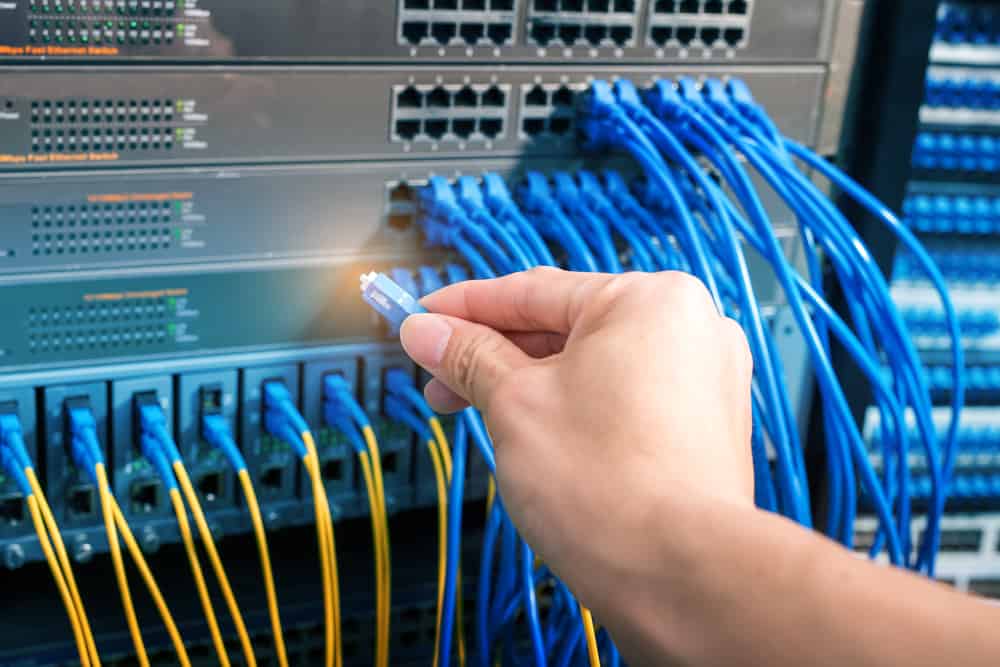Advantages and Disadvantages of Gigabit Ethernet

Advantages of Gigabit Ethernet:
-
High Data Transfer Speeds:
- The primary advantage of Gigabit Ethernet is its high data transmission speed of 1 gigabit per second (Gbps). This allows for significantly faster data transfer compared to traditional Ethernet and Fast Ethernet, improving overall network performance.
-
Bandwidth Support:
- Gigabit Ethernet provides ample bandwidth to meet the demands of modern applications and data-intensive tasks. It is suitable for scenarios involving large file transfers, high-definition video streaming, and other bandwidth-intensive applications.
-
Backward Compatibility:
- Gigabit Ethernet is backward compatible with both Fast Ethernet (100 Mbps) and traditional Ethernet (10 Mbps). This compatibility allows organizations to upgrade their networks gradually without needing to replace existing infrastructure.
-
Duplexing Options:
- Gigabit Ethernet supports both half-duplex and full-duplex communication modes. Full-duplex operation enables simultaneous two-way communication between devices, enhancing network efficiency.
-
Media Flexibility:
- Gigabit Ethernet supports various types of physical media, including twisted-pair copper cables (e.g., Category 5e or Category 6) and fiber optic cables. Different media types offer flexibility in choosing the most suitable medium for specific network requirements.
-
Applications:
- Gigabit Ethernet is well-suited for a wide range of applications, including enterprise LANs, campus networks, data center environments, and scenarios where high-speed connectivity is essential for seamless operation.
-
Efficient Data Center Networking:
- Gigabit Ethernet is commonly used in data centers to support the high-speed interconnection of servers and storage devices. It facilitates efficient data transfer within the data center environment.
-
Scalability:
- Gigabit Ethernet provides scalability to accommodate the increasing number of connected devices and the growing demand for network bandwidth. This scalability is essential for organizations experiencing network expansion.
Disadvantages of Gigabit Ethernet:
-
Cost:
- Implementing Gigabit Ethernet infrastructure, including switches, routers, network interface cards, and cabling, can be more expensive compared to traditional Ethernet or Fast Ethernet. The cost of upgrading to Gigabit Ethernet should be considered, especially for organizations with budget constraints.
-
Limited for Some Applications:
- While Gigabit Ethernet is suitable for many applications, extremely high-performance scenarios, such as certain types of scientific computing or specialized data center applications, may require even higher-speed technologies like 10 Gigabit Ethernet or beyond.
-
Compatibility with Older Devices:
- Older devices that only support traditional Ethernet (10 Mbps) may not fully benefit from Gigabit Ethernet speeds. In mixed-network environments, it's important to ensure compatibility and optimize network configurations.
-
Transition Challenges:
- Organizations transitioning from traditional Ethernet or Fast Ethernet to Gigabit Ethernet may face challenges in ensuring seamless integration and compatibility between different network components. Upgrading network devices and infrastructure may be necessary.
-
Potential Overhead:
- In some cases, the overhead associated with implementing Gigabit Ethernet, including higher power consumption and increased complexity, may need to be considered. This is especially relevant in environments where power efficiency is a critical concern.
-
Limited Cable Lengths:
- The maximum cable lengths for Gigabit Ethernet can be affected by factors such as the type of physical media used. For example, copper cables have shorter maximum lengths compared to fiber optic cables, and this may impact network design considerations.
While Gigabit Ethernet offers significant advantages in terms of speed and performance, organizations need to carefully assess their specific requirements, budget constraints, and the potential need for even higher-speed technologies in the future. As networking technologies continue to evolve, organizations may consider technologies such as 10 Gigabit Ethernet or higher for meeting future bandwidth demands.
Thank you,
